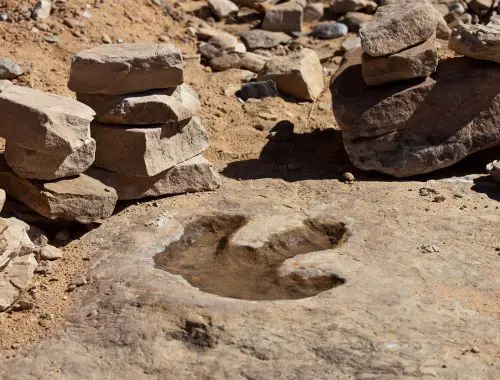Dedicated high school athletes often wonder about how they can win a baseballscholarship to play at “the college of their dreams.” It is wise to learn, before anything else, which colleges actually have baseball teams. The National Collegiate Athletic Association (NCAA) has three divisions that are based on the ability of the players at a college. About 300 schools in the United States participate in Division 1, which is for the best teams. Divisions 2 and 3 have another 600 schools between them. While in high school, the student should not focus entirely on getting into a Division 1 school; instead, he or she should consider all divisions. In later sections of this article we will discuss in detail how to a scholarship for Divisions 1 and 2.
In contrast with such sports as football and basketball, there is only a limited number of scholarships available for baseball. Therefore, the search for a college baseball scholarship really requires intense and prolonged effort on the part of the student and his or her family. It should begin long before one’s senior year of high school. The majority of coaches and recruiters, indeed, recommend that you begin the search as a freshman or sophomore. All NCAA scholarships are awarded once a year and are renewable for another year afterwards.
Because of the gender equity requirements set forth in Title 9 in 1979 for all academic enterprises, only 11.78 scholarships may be awarded by baseball teams. Nor is it at all common for them to give out “full ride” scholarships that pay for all the athlete’s expenses, from tuition to textbooks to room and board, even to the most top-notch players. Instead, almost all baseball scholarships are only partial, though an especially competent athlete may be awarded one that pays up to 75 percent of his expenses. Non-performance on the baseball field is not grounds for cancellation of the scholarship but failure to perform up to the standards of the division, either athletically or academically, certainly is.
Of course, winning a great baseball scholarship requires more than just being able to play the game well. Students must also perform well academically, especially in math and English. Many high school coaches help market their students to college recruiters. However students and their parents often find that they have to do the basic work on their own. This work involves contacting the coaches of colleges where baseball scholarships are offered, going to their campuses and in many cases sending students to the summer baseball clinics that such colleges often operate. Those who excel both as athletes and a students should set high baseball scholarship goals at NCAA colleges.
More about the divisions
We mentioned divisions briefly in the introduction to our article. Let us now describe in greatly how professional baseball is divided since anyone who wants to go into baseball will want to become familiar with them. There are seven divisions in all: three each in the NCAA and the Junior College Division, plus the National Association of Intercollegiate Athletics (NAIA), which organizes athletic programs on the college and university levels. Each division has higher standards than the ones below it. The student who is interested in getting a baseball scholarship should make it a goal to know what academic and athletic standards are required for each division.
Each of the divisions differs in both the number and the kinds of scholarships that it can offer. A maximum of nine scholarships may be offered by an NCAA Division 2 school and they may be either academic or athletic. NCAA Division 3 schools, on the other hand, may offer academic scholarships only, but they may be awarded based on criteria other than academic achievement.
Determining eligibility
To find out how you can qualify for a baseball scholarship, visit the website of the NCAA Eligibility Center. They regularly publish “Information for College-Bound Student-Athletes and Parents” and other documents that you will find useful. In the meantime, be sure to keep your grades up in all your classes and perfect your baseball skills. This means that you practice any time you can, including going to the batting cage and having your family and friends practice with you as a position player. If you are aiming to become a pitcher, try making modifications in the way you pitch and throw the ball, such as a change in pitching angle or your grip on the ball. Likewise, exercise regularly to increase your strength in the legs and arms, like squat thrusts and leg lifts and pulls. Cardiovascular exercise, including running, swimming and riding a bike, is important too.Increase the number of repetitions with each workout.
Division 1 scholarships
Many scholarships are available on the Division 1 level. Put together a list of colleges where they are offered and divide it into several groups according to how much you would like to play there and whether you think you qualify based on your present abilities and skill level. This should narrow down your range of choices. Work with the baseball coaches at your high school to contact those schools and write regular emails to potential coaches thereat. When you finally get to meet with them in person, make a highlight DVD of the meetings so that you can show it to future coaches for whom you want to play.
Division 2 scholarships
Division 2 is on a lower level than Division 2 but such is not necessarily true for their teams. Indeed, many of the players in Division 2 ended up in the Major Leagues. The Southern United States is especially high in proficient Division 2 schools, among them the University of Tampa and Florida Southern University.
http://www.ncsasports.org/recruiting-tools/college-baseball-recruiting/baseball-recruiting-guidelines
http://www.selectcollegeathlete.com/college_baseball_recruiting.php
http://www.athleticscholarships.net/baseballscholarships.htm
http://collegebaseballrecruiting-guide.blogspot.com/2013/10/how-to-get-baseball-scholarship-first.html
https://www.scholarships.com/financial-aid/college-scholarships/sports-scholarships/baseball-scholarships/
http://www.collegescholarships.org/scholarships/sports/baseball.htm
http://www.active.com/baseball/articles/crunching-the-numbers-baseball-scholarships
http://www.active.com/academic/articles/8-steps-to-getting-recruited
http://www.recruitedforscholarships.com/baseballscholarships.html
http://www.tryoutcamps.com/tryoutcamps/college_baseball.html




